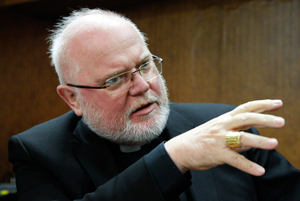(Bloomberg) -- Representative Alexandria Ocasio-Cortez and other progressive Democrats have found an unlikely ally in their call for larger stimulus checks to help Americans weather the pandemic: President Donald Trump

After years of demonizing them as socialists, Trump effectively sided with progressives as he demanded that Congress revisit the just-passed coronavirus package to boost individual payments to $2,000. Democrats seized on the moment, with Ocasio-Cortez saying she had legislation ready to go and challenging Republicans to join them.
Congress’s progressive caucus, led by Washington Representative Pramila Jayapal, have for months been calling for larger direct payments, which some Democrats have rebranded as “survival checks.”
“$600 was never going to be enough for people to withstand this crisis,” Jayapal tweeted Wednesday. “It’s time to send out $2,000 survival checks as quickly as possible -- and make them recurring.”
House Speaker Nancy Pelosi said she would seek unanimous support in the House Thursday on a similar bill to replace the $600 in the current bill with the $2,000 stimulus payments Trump demanded. House Minority Leader Kevin McCarthy told Republicans in a private call Wednesday that Pelosi’s move would fail.
Still, Trump’s support for larger payments bolsters progressives’ demand -- if not in this round of coronavirus relief, then in the next package Congress tries to pass after Joe Biden is sworn in as president.
Deficit Concerns
Earlier this month, 17 members of the Congressional Progressive Caucus sent a letter to to lawmakers calling for unemployment insurance to be extended for at least six months and for recurring direct payments of at least $2,000.
It wasn’t just Democrats who pushed for larger payments to individuals. Conservative Senator Josh Hawley said he wanted at least $1,200. Hawley teamed up with progressive Senator Bernie Sanders to push for larger payments, but their bill was blocked by Republican Senator Ron Johnson.
This puts McConnell in a difficult spot, between Trump, who in effect is backing progressive demands for larger payments, and most Senate Republicans, who have started voicing concerns about the federal deficit.
Throughout the intense negotiations on the virus-relief package, McConnell recognized the political appeal of providing direct payments. Earlier this month, he urged his fellow Republicans to get behind the current relief package in part to help the two Georgia GOP incumbents, David Perdue and Kelly Loeffler, seeking re-election in the Jan. 5 runoffs that will determine control of the Senate. McConnell told Republicans in a closed meeting that Democrats were hammering them on political messaging tied to pandemic relief.
If Democrats manage to win both Georgia races, the Senate would be split 50-50, giving Democrats the majority with Vice President Kamala Harris’s tie-breaking vote.
‘Every Tool’
Progressives have made it clear that they expect the new Congress to pass another relief package next year once Biden takes office.
Jayapal said the scale of aid should be at least $3 trillion -- a figure more than the past two relief packages combined -- and up to $4 trillion. She believes another round of stimulus will still be needed even if Congress amends the current relief package for direct payments to make it $2,000.
Lawmakers’ top priority will be to work with the new administration “to pass a robust relief bill that actually meets the scale of this crisis,” she tweeted Monday.
“Congress did its job this week and I can -- and I must -- ask them to do it again next year,” Biden said on Tuesday. He declined to specify a size for the package he wants, but he did voice support for more aid to state and local authorities.
Even if Democrats manage to win control of the Senate, the party would have very slim majorities -- complicating the prospects for major legislation.
In the House, Pelosi will have a smaller majority next year after several Democratic incumbents lost to Republicans. The narrow margin means she will either need the support of some Republicans or nearly all House Democrats to pass any legislation -- potentially giving progressives more leverage to make demands.
Jayapal recognized the challenges of getting progressive priorities through a narrowly divided Congress, but she said Democrats will use every avenue for the ambitious action she said is necessary. This could include a fast-track process for budget bills that would only require a simple majority in the Senate, not the 60-vote threshold needed to get around a filibuster.
“The reality is we will have to use every tool in the toolbox from administrative actions, budget reconciliation and legislative action to make sure that we are actually addressing the crisis that we’re in,” she said.
For more articles like this, please visit us at bloomberg.com
©2020 Bloomberg L.P.





 © Joel De La Rosa/CNN Kelly Kimbro's ranch in Southeast Arizona now has several miles of new border wall.
© Joel De La Rosa/CNN Kelly Kimbro's ranch in Southeast Arizona now has several miles of new border wall.

 '
'







